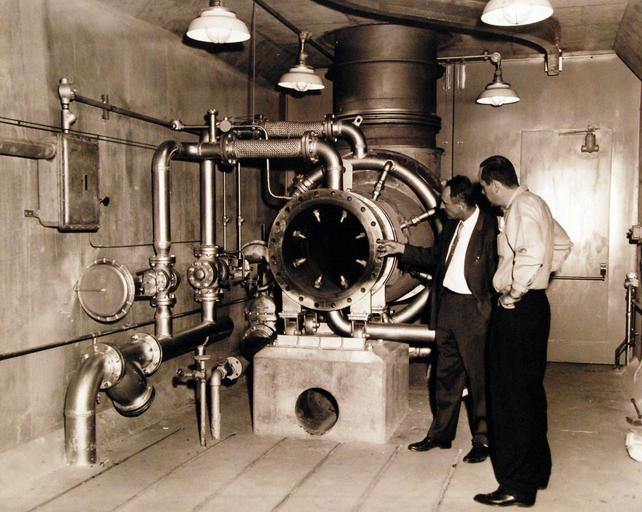MAKE A MEME
View Large Image

| View Original: | 330-PSA-299-61_(USN_710996).jpg (2939x2344) | |||
| Download: | Original | Medium | Small | Thumb |
| Courtesy of: | www.flickr.com | More Like This | ||
| Keywords: indoor 330-PSA-299-61 (USN 710996): Test Cells. One of the four test cells in which air-breathing engines, rockets, and missile models can be tested under simulated flight conditions of high speeds in the upper atmosphere. By releasing high pressure air heated to 8,000 degrees F. against or through the tested unit, the conditions of high speed in the extreme upper atmosphere can be simulated. Dr. H. L. Olsen, left, who heads the Hypersonic Propulsion Laboratory at the Applied Physics Laboratory of John Hopkins Laboratory examines complicated exhaust system of the cell. Nozzels around the inside of the exhaust pipe provide water spray which cool cases from test cells before they are released into the escape vent. Photograph released December 22, 1961. (9/29/2015). 330-PSA-299-61 (USN 710996): Test Cells. One of the four test cells in which air-breathing engines, rockets, and missile models can be tested under simulated flight conditions of high speeds in the upper atmosphere. By releasing high pressure air heated to 8,000 degrees F. against or through the tested unit, the conditions of high speed in the extreme upper atmosphere can be simulated. Dr. H. L. Olsen, left, who heads the Hypersonic Propulsion Laboratory at the Applied Physics Laboratory of John Hopkins Laboratory examines complicated exhaust system of the cell. Nozzels around the inside of the exhaust pipe provide water spray which cool cases from test cells before they are released into the escape vent. Photograph released December 22, 1961. (9/29/2015). | ||||